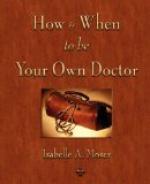Here’s another. Wheat can range from 7 to 19 percent protein. Before the industrial era ruined most wheat by turning it into white flour, wheat-eating peoples from regions where the cereal naturally contains abundant protein tended to be tall, healthy and long-lived. Wheat-eating humans from regions that produce low protein grain tended to be small, sickly and short-lived. (McCarrison, 1921, 1936, 1982; Albrecht, 1975)
Even cows have to pay attention to where their grass is coming from. Some green grass is over 15 percent protein and contains lots of calcium, phosphorus and magnesium to build strong bodies. Other equally or even better looking green grass contains only six or seven percent protein and contains little calcium, phosphorus or magnesium. Cows forced to eat only this poor type of grass can literally starve to death with full bellies. And they have a hard time breeding successfully. The reason for the difference: different soil fertility profiles. (Albrecht, 1975)
When people ate local, those living on fertile soils or getting a significant portion of their diet from the sea and who because of physical isolation from industrial foods did not make a practice of eating empty calories tended to live a long time and be very healthy. But those unfortunates on poor soils or with unwise cultural life-styles tended to be short-lived, diseased, small, weak, have bad teeth, and etc. The lesson here is that Homo Sapiens can adapt to many different dietaries, but like any other animal, the one thing we can’t adapt to is a dietary deficient in nutrition.
So here’s another “statistic” to reconsider. Most people believe that due to modern medical wonders, we live longer than we used to. Actually, that depends. Compared to badly nourished populations of a century ago, yes! We do. Chemical medicine keeps sickly, poorly nourished people going a lot longer (though one wonders about the quality of their dreary existences.) I hypothesize that before the time most farmers purchased and baked with white flour and sold their whole, unground wheat, many rural Americans (the ones on good soil, not all parts of North America have rich soil) eating from their own self-sufficient farms, lived as long or even longer than we do today. You also have to wonder who benefits from promulgating this mistaken belief about longevity. Who gets rich when we are sick? And what huge economic interests are getting rich helping make us sick?




